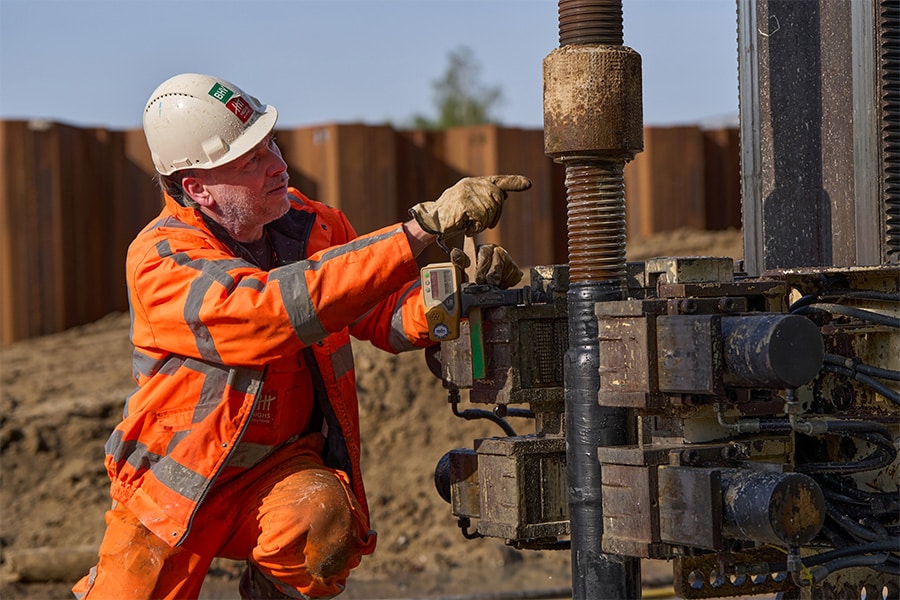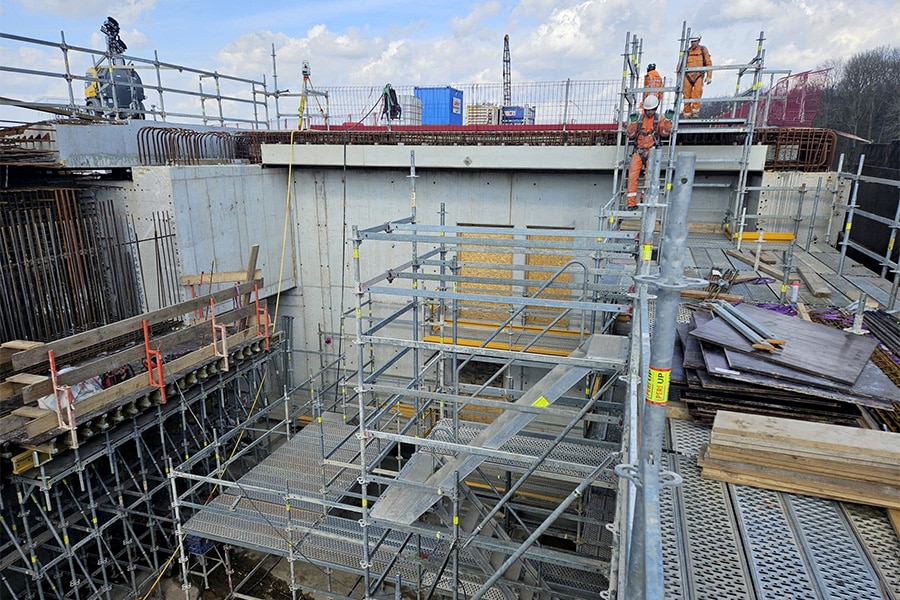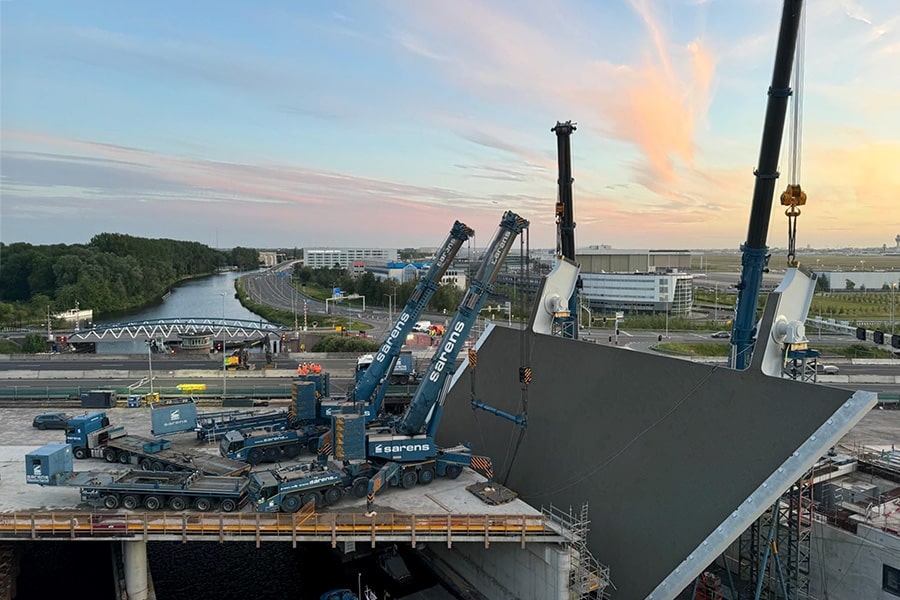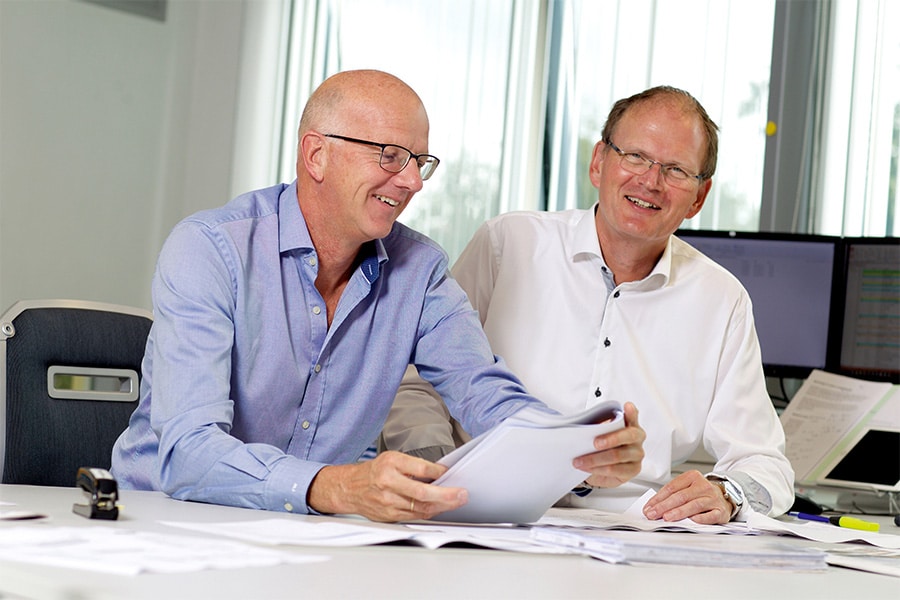
'From aquarium pump to pump 4.5 cubic meters per second'
Vanderkamp Pumps rents solutions for all volumes
"It nicely illustrates where our expertise lies: we rent out everything from aquarium pumps to pumps that transport 4.5 cubic meters per second." Speaking is Rick van der Kamp, owner of Vanderkamp Pumps in Zwolle. Together with colleague Johan Rooijakkers, technical commercial advisor, Rick talks about the innovation-driven evolution within their company.
In today's world, every second counts
"We have been calculating with 'cubic meters per second' instead of cubic meters per minute for some time, as many water boards do. Due to climate change and changing water issues, situations may arise where every second counts. We are responding to that with our pump development," Rick outlines.

The largest pumping volume supplied by Vanderkamp Pumps was an installation at the IJmuiden pumping station. Rick: "That involved a displacement of 72 cubic meters per second. That pumping station is the largest in Europe and contains six pumps. Two had failed and had to be replaced, a job that took a year and a half. Rijkswaterstaat had complete confidence that we could provide sufficient pumping capacity. We ended up with a mix of very large and large pumps, no less than 34 in total. I don't think I need to explain that something like this presents quite a logistical challenge. Full throttle had to be applied from the very first moment because of the emergency situation."
'Delivering knowledge is our core business'
Rick continues: "Obviously, renting pumps is our bread and butter, but our core business is providing knowledge. After all, there is no point in renting out pumps if you don't provide the very best solution for a situation. We want to be the best at analyzing the problem, thinking along in solutions and reflecting that in delivering the best pumps for the situation. And if that means modifying existing pumps, we'll do that."
Not for nothing has the company been around for 30 years. As a family business, Vanderkamp Pumps has the advantage of continuity and room to invest. "Money in a family business is patient. We take the right time for everything, to ensure quality and make sure our customers get more than what was asked for. That's why we see them in return. As a family business, you are constantly aware that your name hangs on everything you do. And if we look at our motives as a family business, the conclusion is that this is not about quick profits, but generations. That creates a totally different corporate atmosphere. Father Eef is now 83 and plays an advisory role within the company. "We actually started together here, so I myself am both first and second generation," Rick explains. "My mother, Leida, passed away two years ago and has been a rock for both my father and me, just as my own wife Rianne is for me. With good reason, I am very proud of my parents and now that I am a father myself, I really realize how proud my parents must have been of me. My father was 53 when he went into business with me. I am now 57 myself and a few years ago two of my three children entered the business. Daughter Linda and son Erik work within the company, daughter Marieke has just finished her studies. The pride I feel for them is phenomenal. Of course, it's reassuring that there is possible business succession from within the family. We'll see!"

Renovation of trunk sewer Oss
We ask the gentlemen about a great reference project. Johan doesn't have to think for long: "A sewer renovation project for Waterschap Aa en Maas. The trunk sewer of Oss (a tube of concrete with a width of 2.45 meters and a height of 1.65 meters) received a life-extending treatment.
This required working in segments, with us always taking care of the detour so that the segment to be treated could be drained. The Aa and Maas Water Board has been carrying out the renovation in phases since 2013 . We sat at the table early on to advise in which sections the trunk sewer could ideally be 'cut up'."

Rick adds, "We are now in phase 3. The section of trunk sewer to be renovated in this phase has a length of 1650 meters. To make the detour, taking into account some cadastral challenges, we had used 1850 meters of our own steel pipe with a diameter of 1000 mm." By cleverly calculating the distribution of the phases, the CO2 footprint was nicely reduced. Johan explains: "The long phases allowed us to request fixed power from Enexis in time and to use electric pumps everywhere. We thus avoided using polluting diesel generators." According to Rick, this working method demonstrates well that Vanderkamp Pumps is a real "knowledge factory. "We think along with sustainability and are able to offer added value at the front of the chain. With our team of employees, including mechanical, civil and electrical engineers, we cooperated excellently with main contractor GW Leidingtechniek BV, as well as with the water board in the research phase."
Proprietary PLCs and software
Vanderkamp Pumps controls the designed installations with PLC controls manufactured in-house and control and monitoring software written in-house. Johan: "We control the pumps remotely and we monitor their operation remotely. For example, we installed a level notification sensor at the water treatment plant, which is linked to the pump installation. So we always dose the right supply, entirely to the receiving capacity of the water treatment plant." Rick adds: "Our client is allowed to look into our systems in 'real time.' We are transparent in everything and give the client this trust, because they do the same with us."
Regarding the execution of the installation for the pump track in Oss, Rick says, "You have to realize that you have to minimize the chance of clogging. You pump really 'tough stuff' sometimes. That's why we chose Pentair pumps with screw centrifugal impellers with a large dirt passage." Johan outlines the situation during heavy rainfall: "When it rains, up to 10,000 cubic meters per hour may have to pass through the pipe. Whereas with dry weather this is only about 800 cubic meters per hour. We have divided the installation into large and small pumps to keep the level in the tube as low as possible at all times."
Own pump developed and built
Many pump manufacturers aim to produce as efficiently and cheaply as possible. "As a revenue model, that makes sense," Rick says. "But with that you sometimes face compromises in situations that demand something better. What we are now becoming unique in is in-house pump development and production. Last year we designed and built our first in-house pump. Our focus? That was on longevity and easy repairs. This pump was designed specifically for sewage purposes, as a submersible pump. Early this year it has already been tested, on clean water. The baptism of fire will be in two pilots, namely in the pipe of the trunk sewer of Oss in which a large load of dirt has to be pumped, and at the Westerholte sewage treatment plant, 500 meters from our location in Zwolle. The first trial was very successful and reason enough to develop this pump further."



